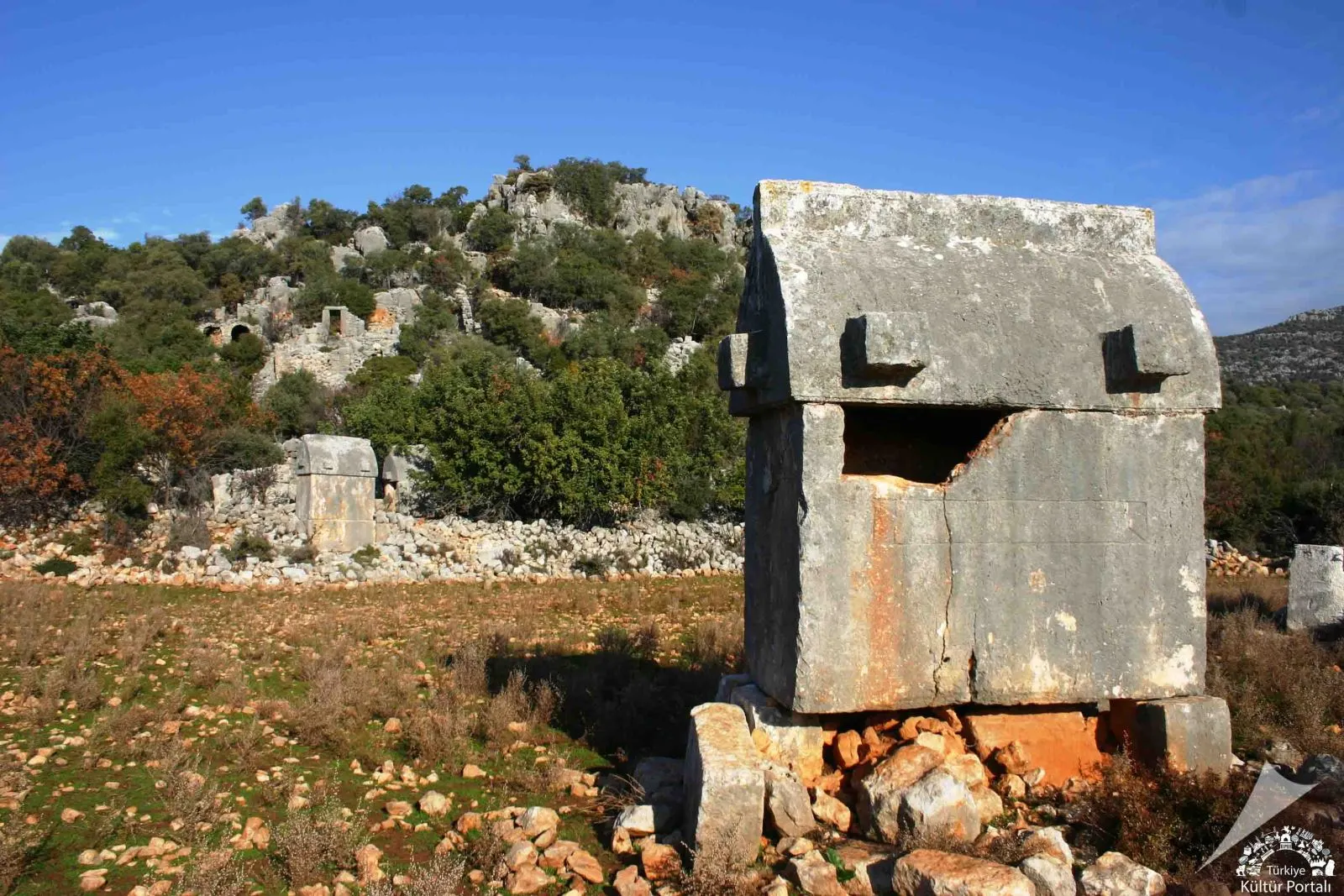Istlada Ancient City
Description
Istlada Ancient City is the most impressive among the small-sized cities of Lycia with its interesting tombs that have survived to the present day.After passing Yavu Village on the Demre-Kaş highway, after 4 km from the Davazlar Village sign, Kapaklı Village is reached. The famous Hoyran Tomb, which is located just opposite the village primary school, is the area where the ruins of the ancient city of Islada are located. The ruins of Istlada are scattered in Kapaklı, Hoyran and Hayıtlı. The name Istlada can be read in many inscriptions of the city and shared the historical fate of the region with other neighbouring cities in the Lycian Union.
Both the interesting reliefs in the tomb of Hoyran and the legible Lycian inscriptions date the city at least to the beginning of the 4th century BC. The ruins indicate that the ancient city was inhabited during the Hellenistic, Roman and Byzantine periods after the Lycian period. Istlada; Apollonia, Aperlai, Phellos or Isinda; has the appearance of a small castle surrounded by walls, inhabited by a small lord. The walls extend to the east and west of the acropolis. The city wall ends with a gate near the eastern end, which provides access to the castle. Just west of the gate are the remains of a structure built to control the gate. The cisterns and wells that can be seen in some places, as well as the canals dug into the local rock to collect water for them, indicate that the water needs were met by accumulation. Istlada also has a very special place in the world of archaeology with its famous "Hoyran Monument" in the village of Kapaklı.
The Hoyrat monument is an example of a house-type tomb carved into the rock. In the center of the pediment the grave owner is depicted with his wife and son. The frieze below the very low gothic pediment shows the tomb owner lying on a divan in the center with soldiers at his feet and his son, daughter, wife and a group of women at his head. On the acroteres there are depictions of sphinxes facing outwards, one of which is broken. The monument is dated to the 4th century BC by the inscription engraved in Lycian alphabet and the reliefs on it.
The east and north of the Acropolis are filled with rock tombs, sarcophagi and single block tombs in the form of stelae. The majority of the sarcophagi are in the typical Lycian sarcophagus form, consisting of a base, a cist and a lid. Between the sarcophagi there are stelae. All of them are made of limestone, the natural formation of the region. The rock tombs are dated to the Classical period and all the sarcophagi to the Roman period. The rock tomb, known as the tomb of the rooster and the pigeon because of the depictions of birds on it, is one of the oldest examples and dates from the early 4th century BC. Another interesting example is a stele-style funerary monument consisting of a single block with a relief of a warrior standing on it, located in front of a typical complex of rock tombs. Looking south from the summit where the ruins are located, Gökkaya Bay and its surroundings can be seen, which is the most striking view of the region and Gökkaya was probably the harbor of the ancient city of Istlada.
Short Description
Istlada Ancient City is the most impressive among the small-sized cities of Lycia with its interesting tombs that have survived to the present day.After passing Yavu Village on the Demre-Kaş highway, after 4 km from the Davazlar Village sign, Kapaklı Village is reached. The famous Hoyran Tomb, which is located just opposite the village primary school, is the area where the ruins of the ancient city of Islada are located. The ruins of Istlada are scattered in Kapaklı, Hoyran and Hayıtlı. The name Istlada can be read in many inscriptions of the city and shared the historical fate of the region with other neighbouring cities in the Lycian Union.





